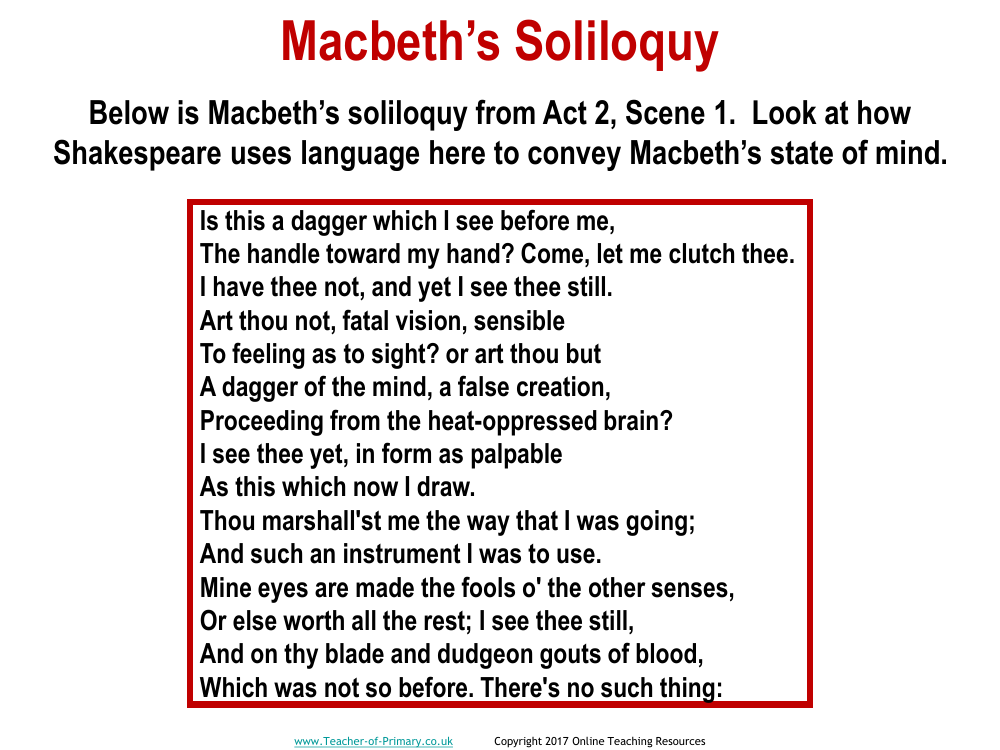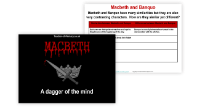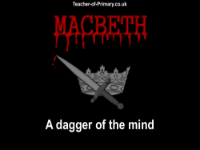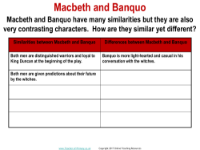Macbeth - Lesson 10 - Macbeths Soliloquy Worksheet

English Resource Description
In one of the most iconic moments of Shakespeare's "Macbeth," the protagonist delivers a soliloquy that delves deep into his troubled psyche. This passage, taken from Act 2, Scene 1, is a window into Macbeth's inner turmoil as he contemplates the ghastly act he is about to commit. Shakespeare masterfully employs language to paint a picture of Macbeth's mental state as he envisions a dagger leading him towards his dreadful deed. The soliloquy reveals Macbeth's hallucination of a dagger, a "fatal vision" and a "false creation" of his heat-oppressed brain, which seems as tangible as the real weapon he draws. The vivid imagery of the dagger, with imagined blood on its blade, signifies the impending violence and the irreversible nature of his actions.
Macbeth's words illustrate his descent into darkness, as he speaks of the night's oppressive nature and the wicked dreams that plague sleep. He invokes the silent complicity of the earth, pleading for it not to reveal his stealthy approach to King Duncan's chambers. The soliloquy is punctuated by the ominous ring of a bell, which Macbeth interprets as a signal that spurs him into action. This sound marks the point of no return, as he acknowledges it as a knell that will call Duncan either to heaven or to hell. Through this powerful soliloquy, Shakespeare effectively conveys the conflict and foreboding that haunts Macbeth, setting the stage for the tragedy that is to unfold.



